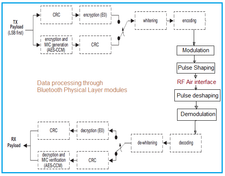10 Wireless Communication Interview Questions and Answers
Advertisement
Wireless communication refers to the transmission of information or data between devices without the use of physical wires or cables. Instead, it relies on electromagnetic waves, such as radio waves, microwaves, or infrared signals, to carry information from one point to another.
This technology has become ubiquitous in modern life and is used in various applications, including mobile communication, Wi-Fi, Bluetooth, NFC, Satellite, WSN, radio communication, IoT, etc.
Following is a list of questions and answers on Wireless Communication. This questionnaire will help one pass the job interview for various wireless or telecom positions.
Wireless Communication Questions and Answers
Question 1: What is wireless communication, and how does it differ from wired communication?
Answer 1: Wireless communication refers to the transmission of information without the use of physical cables or wires. It relies on electromagnetic waves for data transmission.
In contrast, wired communication uses physical connections like cables and wires to transmit data.
Question 2: Explain the concept of modulation in wireless communication.
Answer 2: Modulation is the process of varying a carrier signal’s properties (e.g., amplitude, frequency, or phase) to encode information. It allows data to be transmitted over wireless channels by superimposing the information onto a carrier wave.
Question 3: What is the difference between analog and digital modulation?
Answer 3: Analog modulation encodes continuous analog signals into carrier waves, whereas digital modulation encodes discrete digital signals into carrier waves. Digital modulation is more robust against noise and interference.
Question 4: What are the main components of a wireless communication system?
Answer 4: A typical wireless communication system includes a transmitter, a receiver, a communication channel, and modulation/demodulation techniques. Antennas are also essential for transmitting and receiving signals.
Question 5: What is the significance of the Shannon-Hartley theorem in wireless communication?
Answer 5: The Shannon-Hartley theorem provides a fundamental limit on the maximum data rate that can be reliably transmitted over a noisy channel. It helps determine the channel capacity and sets a benchmark for designing efficient communication systems.
The Shannon-Hartley theorem is mathematically expressed as:
Where:
- is the channel capacity (bits per second)
- is the bandwidth of the channel (Hertz)
- is the average received signal power (Watts)
- is the average noise or interference power (Watts)
Question 6: What is the difference between narrowband and broadband wireless communication?
Answer 6: Narrowband communication uses a narrow range of frequencies and is typically used for low data rate applications. Broadband communication uses a wide range of frequencies and can support higher data rates, making it suitable for multimedia and high-speed internet applications.
Question 7: Explain the concept of multiple access techniques in wireless communication.
Answer 7: Multiple access techniques allow multiple users to share the same communication channel simultaneously. Common techniques include Frequency Division Multiple Access (FDMA), Time Division Multiple Access (TDMA), and Code Division Multiple Access (CDMA).
Question 8: What are the challenges and solutions for mitigating interference in wireless networks?
Answer 8: Challenges include co-channel interference and adjacent channel interference. Solutions involve optimizing channel allocation, using directional antennas, and implementing interference cancellation techniques.
Question 9: What is the role of MIMO (Multiple-Input, Multiple-Output) technology in wireless communication?
Answer 9: MIMO technology uses multiple antennas at both the transmitter and receiver to improve signal quality, increase data rates, and reduce interference. It’s widely used in modern wireless communication systems like Wi-Fi and 4G/5G.
Question 10: What are the security considerations in wireless communication, and how can they be addressed?
Answer 10: Security concerns in wireless communication include eavesdropping, data interception, and unauthorized access. Security measures involve encryption, authentication, secure key exchange protocols, and regular software/firmware updates to patch vulnerabilities.
Advertisement
 RF
RF






